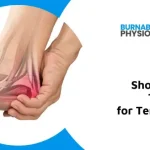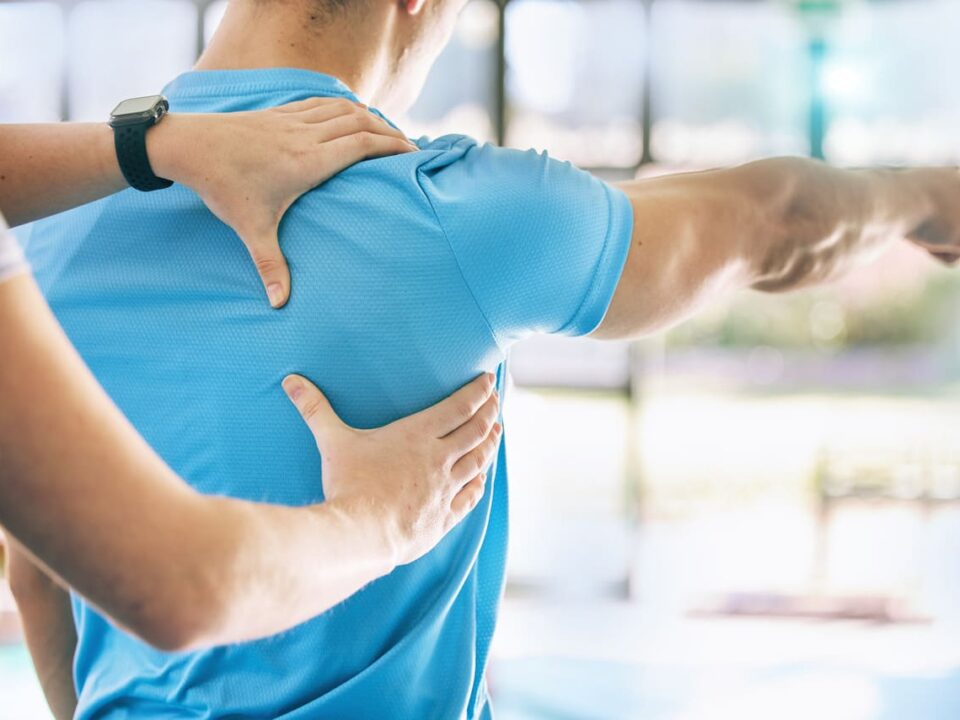
Shockwave Therapy for Tendonitis: Natural, Safe, and Effective Treatment
November 23, 2022
Shockwave Therapy To Relieve Plantar Fasciitis
December 23, 2022Physiotherapy and Achilles Tendonitis: A Comprehensive Guide
Achilles tendonitis is a painful injury that impacts the Achilles tendon, which connects the upper leg muscle to the heel. It’s triggered by excessive use and repetitive pressure of the tendon and can be extremely incapacitating, hindering some daily tasks and negatively affecting your lifestyle. Symptoms may include hip pain, leg pain, muscle strains and chronic pain.
Fortunately, physical rehabilitation is a powerful treatment for this condition. Physio therapists make use of a wide range of techniques to decrease swelling and soreness, boost mobility, and reinforce the muscles around the affected area.
This short article will discuss exactly how physical rehabilitation can serve to help treat Achilles tendonitis and also offer some pointers on just how to get the absolute most from your therapy.
What is Achilles Tendonitis?
As was discussed earlier, Achilles tendonitis is an uncomfortable condition bearing upon the tendon that links the upper leg muscle to the heel.
Tendonitis is triggered by repeatedly straining a tendon and can be extremely restricting. Symptoms of Achilles tendonitis consist of soreness and rigidity behind the lower leg, swelling, tenderness, as well as difficulty taking a walk or running.
Achilles tendonitis can lead to further injury to the tendon or even tendon rupture if left with no treatment. While the majority of cases will at some point heal on their own, recovery times may be significantly sped up by means of a visit to the physiotherapist.
Root Causes Of Achilles Tendonitis
Achilles tendonitis is triggered by excessive use or repetitive pressure of the Achilles tendon. This can happen from overuse injuries such as running, leaping, and playing sporting activities that require a great deal of jumping or running. A lot of sportsmen will most likely experience this common sports injury at some point in their lives.
Achilles tendonitis can likewise be brought on by putting on shoes that do not offer sufficient reinforcement for the feet, or by having taut calf muscle tissues. Additionally, people with flat feet are more at risk to suffer with Achilles tendonitis because of the increased pressure on the tendon when walking or running.
Advantages of Physical Rehabilitation for Achilles Tendonitis
Physiotherapy provides several essential advantages to people who suffer from Achilles tendonitis. Physiotherapy reduces discomfort and swelling in the muscle tissues by stimulating blood circulation to the damaged area as well as loosening the stress that the muscle mass and tendon are experiencing.
Physiotherapy likewise serves to help to boost flexibility and also boost a patient’s range of activity as the tendon is healing. Then finally, physical rehabilitation serves to help to reinforce the muscles surrounding the affected area, making re-injury to the tendon less probable.
What’s more, physiotherapists can analyze the condition and develop an individualized rehabilitation plan to help reduce your pain as well as enhance tendon and muscle function.
Varieties Of Physical Rehabilitation Treatments for Achilles Tendonitis
The first step in addressing Achilles tendonitis through physiotherapy is to reduce pain and swelling. This can be accomplished through techniques such as ice therapy, ultrasound, and electric stimulation. Once the swelling has actually been reduced, stretching and reinforcing movements may be used to enhance the flexibility and strength of the Achilles tendon.
Physiotherapists also use a range of methods such as stretching exercises, massage treatment, ultrasound treatment, ice/heat therapy, electric stimulation (TENS), and bracing/taping to treat this condition.
Stretching exercises are important for improving flexibility in the upper leg muscle tissues while strengthening workouts help develop strength in these muscles.
Massage therapy helps reduce tension in tight muscle tissues while ultrasound treatment helps in reducing inflammation. Ice/heat treatment can likewise be utilized to lessen swelling and pain, while electrical stimulation (TENS) helps unwind taut muscle tissues. Bracing/taping can also provide reinforcement for damaged tendons.
Tips for Getting the Best Results Out of Physiotherapy Treatment
Follow these tips to get the best results out of your physiotherapy therapy:
- Choose a physiotherapist that you’re comfortable teaming up with. Your physio therapist should be proficient and well-experienced in the treatment of Achilles tendonitis and various other injuries.
- Follow your physio therapist’s instructions and do all of the suggested workouts. While some exercises might be momentarily unpleasant, they are vital to loosening the tension which produced the injury and strengthening your muscle tissues to prevent additional damage.
- Wear supporting footwear when engaging in activities that may trigger stress on the Achilles tendon. Poor foot support is a contributing element to Achilles tendonitis as well as similar injuries.
- Stretching and strengthening workouts need to be done regularly to maintain mobility and stamina in the calf muscles.
- Lastly, icing or heat treatment may be utilized to minimize soreness and swelling after workouts.
By following these suggestions, you can make sure that you are getting the most out of your physical rehabilitation therapy.
Summary
Physical rehabilitation is a powerful therapy for Achilles tendonitis, delivering discomfort relief, boosted flexibility and range of motion, and building up of the muscles surrounding the damaged spot.
Physio therapists make use of a variety of methods such as stretching workouts, massage therapy, ultrasound treatment, ice/heat treatment, electrical stimulation, and bracing/taping to treat this problem.
To get the best results out of physical rehabilitation treatment for Achilles tendonitis, it is vital to find a physio therapist that you are at ease with and follow their instructions.
Additionally, supporting shoes need to be used throughout activities that may trigger strain on the Achilles tendon, and flexing and strengthening exercises should be performed regularly. Finally, icing or heat therapy may be made use of to lessen discomfort and swelling after exercise.
Give the experts at Burnaby Heights Physiotherapy a phone call and let our experienced staff of physiotherapists help eliminate your Achilles tendonitis pain and discomfort. We’re now accepting new patients, so call today.






